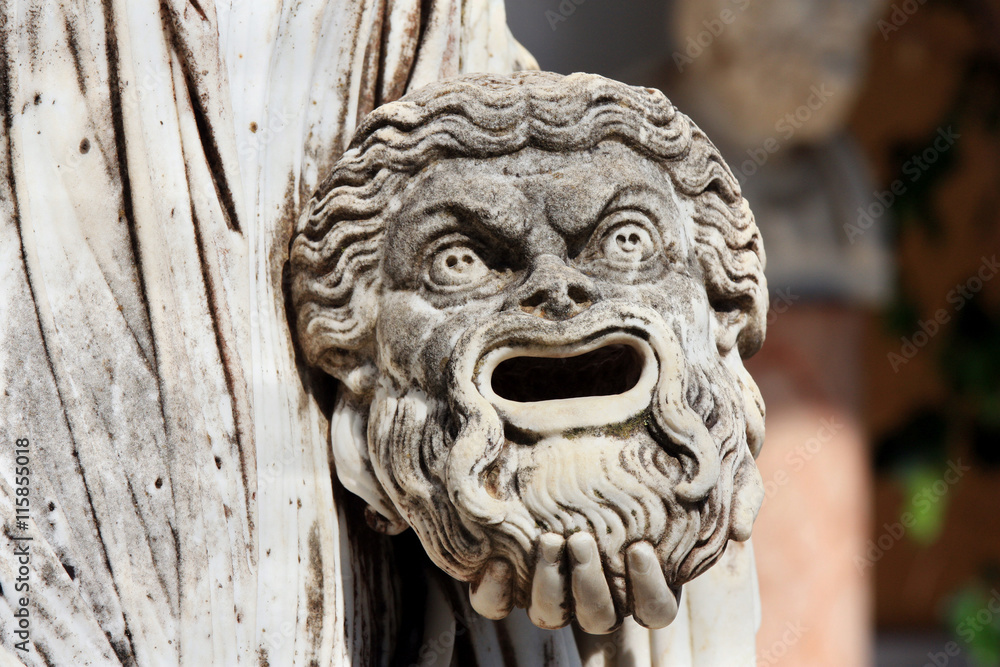
A tragic mask in the hand of Statue of Melpomene, the muse of tragedy, on the balcony of Achillion princess Sissy's palace on greek island Corfu in Greece.
The Greek masks people used in the 5th century were helmet-like, covering the whole face and also the head. There are small holes in the mask at the places of the eyes and mouth for people to breath and see. The purpose of this is to demonstrate the way the mask was made to ‘melt’ into the actor’s face and allow the actor to vanish into the role.
The masks in Ancient Greek Theatre are made of light, organic materials like stiffened linen, leather, wood, and cork; while the wig consists of human or animal hair.
The masks added visibility and transformation to Ancient Greek Theatre. Their exaggerated features made character’s faces easy to see from far away in the huge open-air theatres. Masks also allowed one actor to play several different roles, and helped the audience recognize gender, age, social status, or changes in a character. Because of the Three-Actor rule, each performance can only have a maximum of three people acting. The masks helped the audience realize what role the actor was acting as at the moment. Performers wore masks because theatre was a religious act in honour of Dionysus. By putting on a mask, the actor gave up his identity and became the character, letting another voice speak through him. Furthermore, another purpose of wearing masks was because the mask acts a megaphone or resonance chamber. The mask covers the whole head, allowing the sound waves the actor emits to bounce around in the mask, shaping the tone, volume, and direction of the voice, so that even faraway spectators could hear words clearly.
